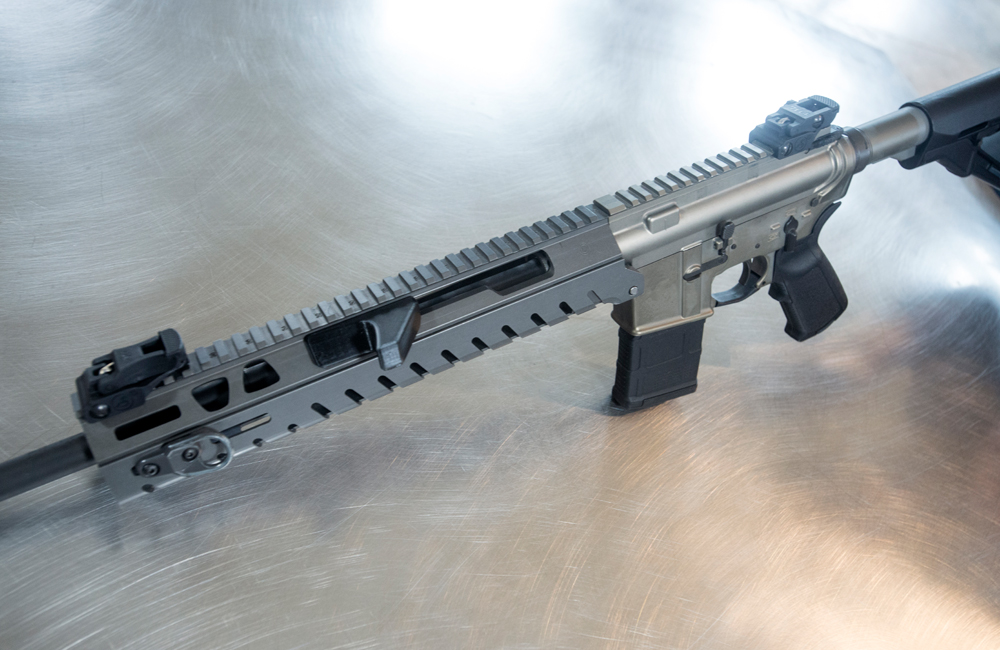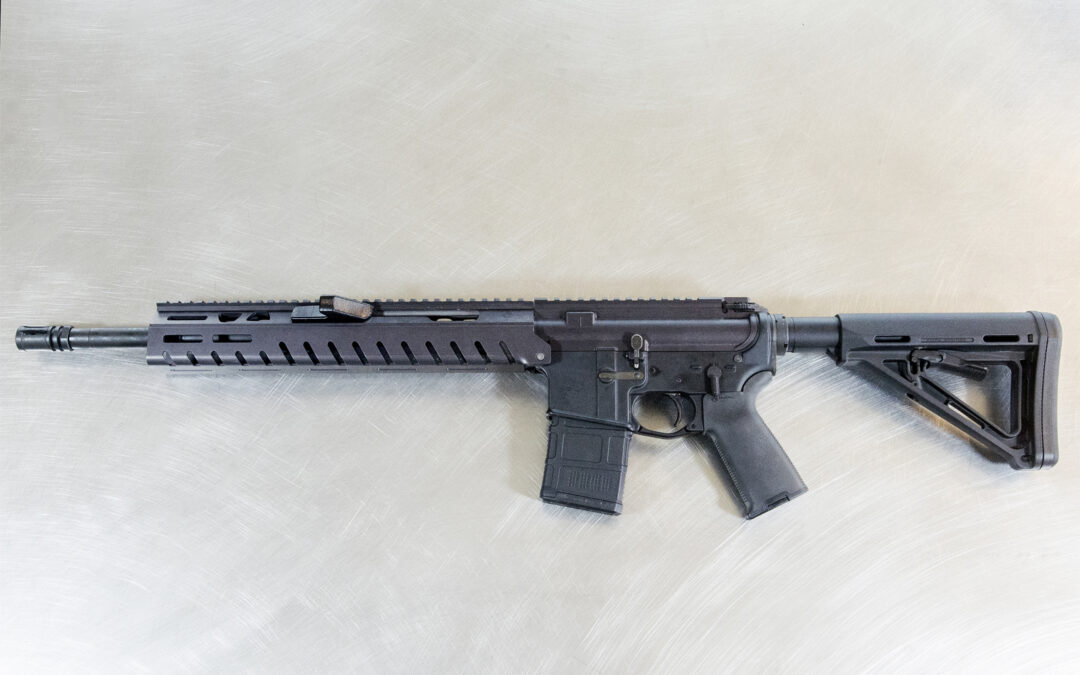The AR-15 rifle, a staple in tactical weaponry, offers a range of configurations, each tailored to meet specific operational needs. Among these, the placement of the charging handle stands out as a critical feature, deeply influencing the rifle’s functionality in high-stakes scenarios. This article delves into the nuances of side and standard top charging handles, examining their advantages and limitations to aid users in making an informed choice.
The Standard Charging Handle: Traditional and Competitive
Historically, the AR-15 has been equipped with a standard top charging handle, a design that aligns with traditional rifle architecture. This setup, while familiar to many shooters, imposes certain restrictions, particularly in the realm of competitive shooting. The standard charging handle necessitates a limitation on the height of the buttstock’s top line, ensuring the handle’s full retraction during operation. This restriction can influence the rifle’s ergonomics, especially when considering adjustments for a customized or elevated cheekpiece.
Despite these limitations, standard charging handles offer a sense of familiarity and standardization. They maintain the rifle’s traditional balance and aesthetics, factors that can influence a shooter’s comfort and performance. In certain designs, top charging handles enable shooters to maintain visual contact with the target while operating the handle, a feature invaluable in low-light conditions or rapid response scenarios.

The Rise of Side Charging Handles: Tactical Edge
In contrast, the side charging handle, an innovation in AR-15 design, brings a tactical edge to the platform. Positioned typically on the left side of the rifle, the side charge handle enhances the weapon’s functionality in close-quarters combat. Its placement allows the operator to maintain their firing hand on the trigger while using the support hand to operate the charging handle. This arrangement is crucial in scenarios where every second matters, offering a significant advantage in self-defense and tactical situations.
The side charging handle also enhances the AR-15’s versatility. For instance, in a scenario where an operator is incapacitated in one hand, the rifle can still be charged by pressing the handle against a rigid surface, like a wall or tree, and pushing the rifle forward. This capability can be lifesaving in combat situations where injury is a constant risk.
Additionally, side charging handles offer a degree of ambidextrous functionality. For left-handed shooters, this design avoids the common issue of the charging handle interfering with the rifle’s scope—a frequent problem in traditional standard charge designs. This feature expands the AR-15’s accessibility to a broader range of shooters, making it a more inclusive weapon platform.
The Trade-Offs: Cost and Preference
The choice between side and standard handles is not without its trade-offs. Side charging AR-15s, while offering tactical advantages, often come at a higher cost. This price increase can be attributed to the more complex manufacturing process and the additional components required for the side charging mechanism. For many, however, the investment is justified by the operational benefits, particularly for those prioritizing
self-defense or tactical applications.
However, it’s crucial to recognize that the choice between a side and a standard handle is deeply personal and heavily dependent on the shooter’s preferences and needs. For some, the traditional feel and operation of the standard top charging handle align better with their shooting style and comfort. In contrast, others may find the tactical advantages and ambidextrous nature of the side charging handle more aligned with their operational requirements.

Ergonomics and Handling
Ergonomically, side charging handles offer a more natural motion for many shooters. The action of pulling a handle located on the side of the rifle can be more intuitive and less strenuous, especially during prolonged use in training or combat situations. This ergonomic advantage can translate into faster, more efficient weapon handling, an essential factor in high-pressure environments.
On the other hand, standard charging handles have a more traditional pull-back action that many shooters are accustomed to. This familiarity can be beneficial, especially for those who have trained extensively with traditional rifle designs. The muscle memory and handling techniques developed with standard charging handles are valuable skills that many shooters are reluctant to alter.
Customization and Adaptability
The AR-15’s modularity is one of its most appealing features, allowing each user to customize their rifle to their specific needs. The choice of charging handle is a significant aspect of this customization. While side charging handles offer a modern, tactical approach, standard charging handles maintain a classic, time-tested design. Both options provide different paths to the same goal: creating a weapon tailored to the shooter’s preferences and requirements.
For those interested in customization, the AR-15’s charging handle choice is just the beginning. Other aspects like barrel length, grip style, sighting systems, and accessory rails all play into creating a personalized weapon. The charging handle, whether top or side-mounted, becomes an integral part of this customization process, reflecting the shooter’s style and tactical needs.
The Power of Choice
The debate between side and standard charging handles in AR-15 rifles is a testament to the weapon’s versatility and adaptability. Each configuration offers distinct advantages and caters to different preferences and tactical requirements. Whether a shooter values the traditional, competitive edge of the standard top charging handle or the tactical, ergonomic benefits of the side charging handle, the AR-15 platform accommodates these preferences.
Ultimately, the choice between a side charge or standard charge AR-15 is a personal decision, influenced by individual needs, shooting style, and tactical considerations. Both setups offer unique advantages, making the AR-15 one of the most versatile and adaptable rifles available. As with any aspect of firearms, informed choice, regular training, and practice are key to mastering the capabilities of this remarkable weapon.

